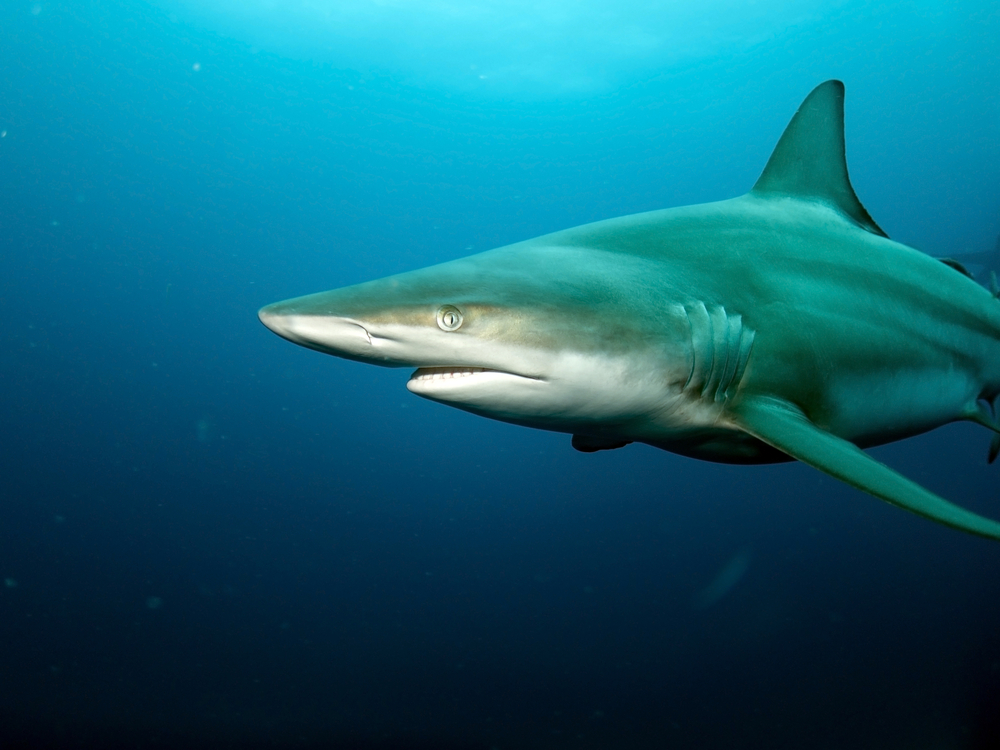Why Are Sharks Swarming in Florida?

Seeing one shark is enough to scare most swimmers out of the water. Seeing thousands of sharks in the water — and many leaping into the air as they hunt for prey — could be enough to keep a swimmer out of the water for life.
That's the scenario greeting beachgoers this week in Palm Beach County, Fla., where as many as 15,000 sharks are swarming in the area's warm shallow waters, the Palm Beach Daily News reports.
"They were practically right on the sand," lifeguard supervisor Craig Pollock told the Palm Beach Daily News. "They were frenzied and chasing bait all the way up to shore." Beaches around the area are now closed to swimmers.
Pollock identified the sharks as blacktip sharks (Carcharhinus limbatus) and spinner sharks (Carcharhinus brevipinna). Both species are renowned for leaping out of the water and "spinning" in the air as they search for the smaller fish that make up their diet.
"I saw something jump," Allen Ginsberg, a New Jersey visitor, told the Palm Beach Daily News. "It looked like the shape of a shark, but I didn’t believe it at first and thought it was a fish."
Shark swarms
The dense pods of sharks seen off Florida shores are nothing new: These swarms are part of an annual migration that carries the animals south to their winter feeding grounds, Steve Kajiura, a shark researcher with Florida Atlantic University, told TCPalm.com.
Sign up for the Live Science daily newsletter now
Get the world’s most fascinating discoveries delivered straight to your inbox.
"Our data has shown that the bulk of the migration occurs in January and February," Kajiura said, "but it may be a little behind this year due to the warmer weather and water temperatures."
During the winter months, when shark migrations are at their peak, there may be as many as 1,000 sharks in a 0.4 square-mile area (1 square kilometer). According to Kajiura, someone swimming during the shark migration is, on average, just 60 feet (18 meters) from a shark. [The 10 Most Incredible Animal Journeys]
"It is surprising to think there may be a shark swimming 60 feet away from us, but they are not out to get us," Kajiura told TCPalm.com.
Several species of sharks go on long-distance migrations of thousands of miles, according to noted shark expert Mahmood Shivji, of the Save Our Seas Shark Center and Guy Harvey Research Institute, Nova Southeastern University.
"A few examples of long-distance migrating species are: tiger sharks, short-fin mako sharks, white sharks, basking sharks, oceanic whitetip sharks [and] blue sharks," Shivji, who is director of the institute, told LiveScience.
Mysterious migrations
Researchers, however, are not completely sure why these migrations occur. "It could be for mating or giving birth, but also for feeding (following their prey that also migrate), or simply that the water gets too cold for them in some places in the winter," Shivji said.
"We are starting to learn a fair amount about the migrations of a few species, such as tiger sharks, white sharks, mako sharks [and] salmon sharks," Shivji said. "But information on migrations of most shark species is still sparse."
Shivji's work includes animated interactive websites that let the public track migrations of species such as tiger sharks in the Atlantic Ocean and mako sharks near New Zealand.
The blacktip and spinner sharks seen near Palm Beach County beaches don't usually target humans, though a handful of shark attacks have occurred. Florida reports the most shark bites of any U.S. state each year — 26 were reported in the state in 2012, according to the University of Florida's International Shark Attack File, and none of the bites were fatal.
"Shark attack as a phenomenon is extremely uncommon, considering the millions of hours humans spend in the water each year," said George Burgess, director of the International Shark Attack File.
Thirty million to 70 million sharks are killed every year in fisheries, Burgess noted, and humans pose a far greater threat to sharks than sharks do to humans.
"Because of their low rate of reproduction, [sharks] cannot keep up with the heavy fishing pressure encountered, and populations of many shark species have declined tremendously worldwide," Shivji said. "Understanding how they 'work,' including migrations, is essential to implementing effective management and conservation [practices] to prevent further declines."
Email Marc Lallanilla or follow him @MarcLallanilla. Follow LiveScience on Twitter @livescience, Facebook & Google+. Original article on LiveScience.com.











